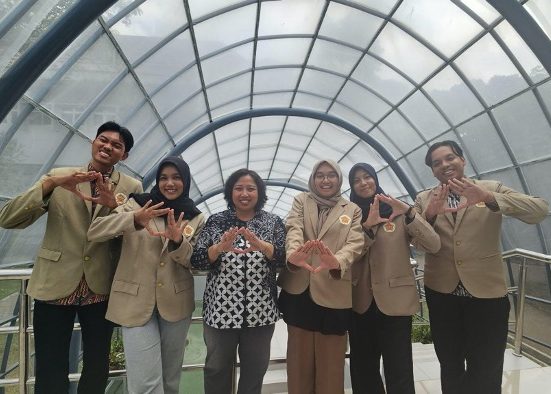Cervical cancer ranked second most common cancer in Indonesia, with 36,633 reported cases in 2021, and the third leading cause of cancer-related deaths. Current cervical cancer treatment is chemotherapy, radiotherapy, and surgery with side effects that can significantly reduce the patient’s quality of life. Most cases of cervical cancer are caused by HPV (Human Papillomavirus) infection, which produces E6 and E7 oncoproteins. These proteins interfere with programmed cell death (apoptosis), accelerate the cell cycle, and lead to cell immortality, resulting in cancer.
Combination Salacca zalacca (Gaertn.) Voss Seeds and Citrus maxima (Burm.) Merr. Peel Waste has shown potential as an alternative cervical cancer treatment. This discovery comes from research conducted by UGM students in the Student Creativity Program for Exact Science Research (PKM-RE). The team, consisting of Aditya Latiful Azis (Biology 2022), Asy Syifa Paras Ceria (Biology 2022), Shabrina Farras Tsany (Medicine 2021), Rahmalia Diani Saffana (Medicine 2021), and Faqih Fikri Nuryanto (Pharmacy 2023), under the supervision of Woro Anindito Sri Tunjung, M.Sc., Ph.D., has explored the potential of Salacca zalacca (Gaertn.) Voss Seeds and Citrus maxima (Burm.) Merr. Peel Waste as an alternative therapy for cervical cancer.
Salacca zalacca (Gaertn.) Voss Seeds contain potent antioxidants including polyphenols, alkaloids, and terpenoids, while Citrus maxima (Burm.) Merr. Peel Waste is rich in flavonoids and lycopene, which are cytotoxic to cancer cells. The herbal remedy derived from these two ingredients is predicted to have milder side effects.
“This research aims to utilize Indonesia’s natural resources for cervical cancer therapy. Salacca zalacca (Gaertn.) Voss Seeds and Citrus maxima (Burm.) Merr. peel wastes were selected due to their secondary metabolite content, which has potential anticancer properties. Additionally, the increasing production and consumption of Salacca zalacca (Gaertn.) Voss and Citrus maxima (Burm.) Merr. lead to organic waste issues. We hope this research offers an eco-friendly and milder side effect alternative treatment,” said Aditya, the team leader.
The research conducted for four months involved various tests, including phytochemical screening, in silico studies, anti-inflammatory activity tests, cytotoxicity and antiproliferative assays using the MTT method, inhibition of HeLa cell migration, and apoptosis tests.
The result showed the combination of Salacca zalacca (Gaertn.) Voss Seeds and Citrus maxima (Burm.) Merr. Peel Waste could inhibit inflammation, halt cancer cell migration, and trigger cell death (apoptosis).
The result showed the combination of Salacca zalacca (Gaertn.) Voss Seeds and Citrus maxima (Burm.) Merr. Peel Waste could inhibit inflammation, halt cancer cell migration, and trigger cell death (apoptosis).
The results of this study are expected to pave the way for cervical cancer therapy that harnesses Indonesia’s natural wealth and supports zero-waste initiatives. [Written by: Aditya Latiful Azis]

